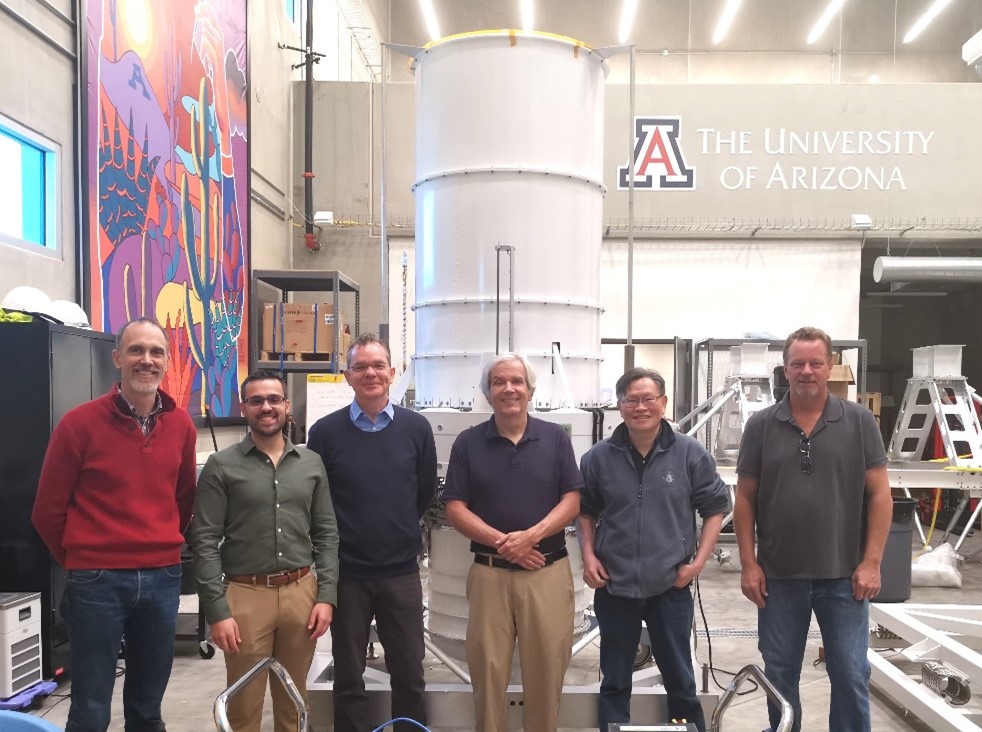Balloon telescope GUSTO ready for integration with gondola
NASA’s GUSTO balloon telescope has passed its payload pre-shipment review. It will now ship from the University of Arizona to Johns Hopkins Applied Physics Laboratory for the final integration onto a gondola. This means GUSTO is on schedule for launch in December from Antarctica. SRON and TU Delft together developed GUSTO’s three 8-pixel cameras that will observe cosmic material between stars.
NASA’s Galactic/Extragalactic ULDB Spectroscopic Terahertz Observatory (GUSTO) mission is a balloon observatory that will drift and circulate in the Earth’s atmosphere above Antarctica for 55 days, at the edge of space at 36 km altitude. The observatory consists of a telescope of one meter in diameter and a cryogenic instrument carried by an Ultra-Long Duration Balloon.
GUSTO contains three array receivers to detect electromagnetic radiation lines of 1.4, 1.9, and 4.7 terahertz, to map respectively ionized nitrogen (NI), carbon (CII), and oxygen (OI) in the spectrum of the interstellar medium—the material floating in between stars. This helps astronomers to determine the life cycle of interstellar gas in our Milky Way, witness the formation and destruction of star-forming clouds, and understand the dynamics and gas flow in the vicinity of the Milky Way’s center.
The GUSTO team has now installed all detector arrays together with local oscillators into a 4 Kelvin cryostat, which is further integrated with the telescope. This payload/telescope part will be shipped to the Applied Physics Laboratory for integration with the gondola—the final step in the completion of GUSTO. Due to Covid-19 and a number of technical challenges, GUSTO has had a two-years delay.
SRON and TU Delft contribute the so-called Hot Electron Bolometer multi-pixel (heterodyne) cameras and a multi-beam local oscillator based on a quantum cascade laser and a novel phase grating, which helps the detectors to determine the exact color of the incoming far-infrared light.
Image caption: Members of the GUSTO team from the University of Arizona and SRON in front of the telescope in a newly built hangar in Arizona. Credit: SRON/Peter Roelfsema
Pages:
- 1
- 2


